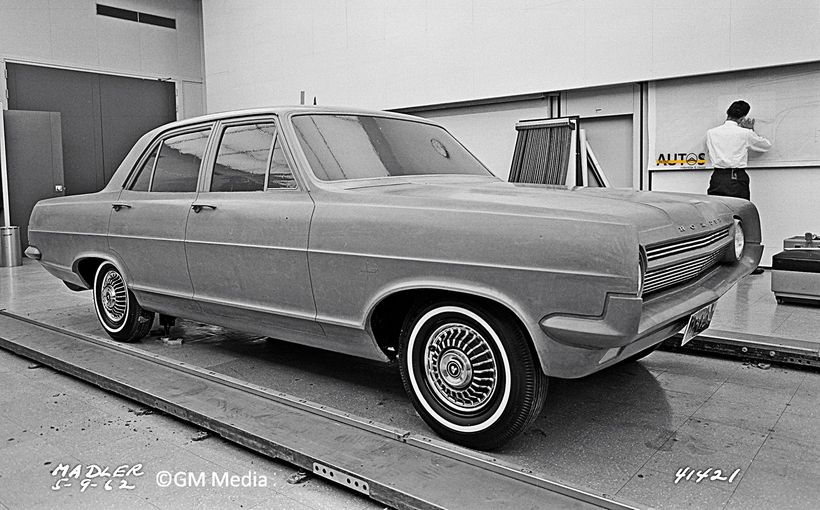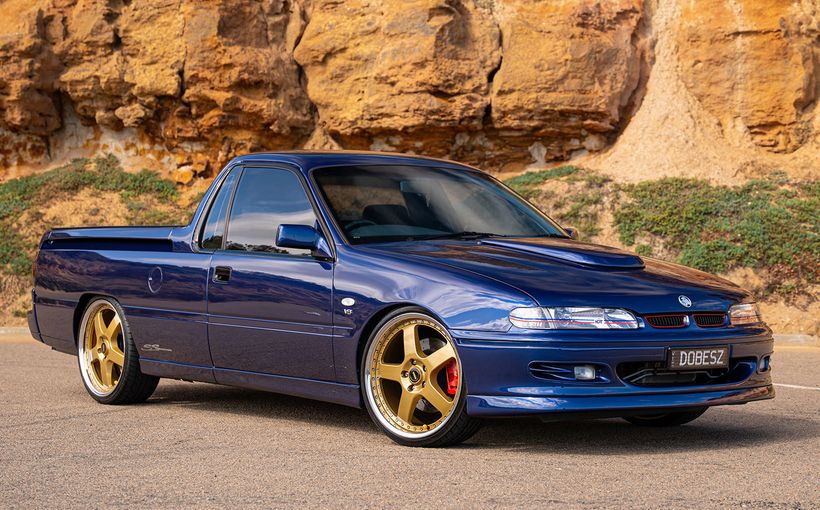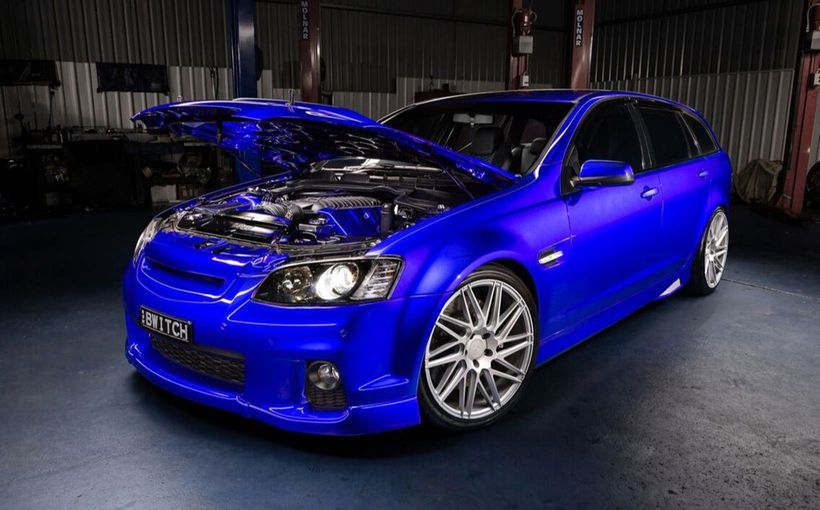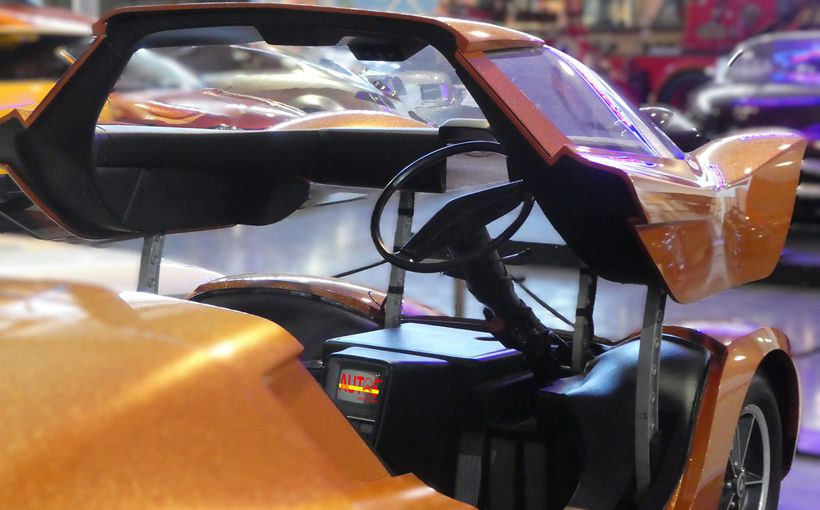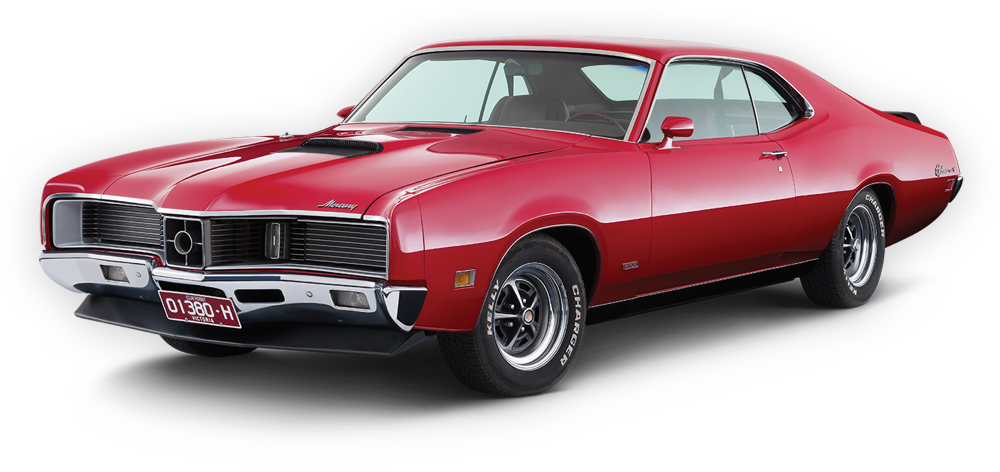
Their enthusiasm boosted Holden’s market share from 29.4% in 1955 to 34.5% in 1956. General Motors Holden’s (GMH) 1956 annual report noted:
“Customer demand still exceeded the company’s ability to supply, and at the end of the year distributors and dealers were holding thousands of unfilled orders.”

The FE range pictured outside a house in the Melbourne suburb of Toorak. The house is still there, looking almost the same as it did in 1957.
What new model?
As was typical of GMH back then, in the months ahead of the FE’s launch they denied a new model was imminent. There were no pre-release previews for the motoring magazines. They were ignored. What was the point? GMH could sell every car it made. Who needed pesky motoring journalists asking questions? The plan was for the FE to be revealed in Holden’s dealerships supported by advertisements in newspapers, radio, cinemas and TV. But not everything goes to plan.

The emphasis was on glamour and colour schemes in magazine advertisements.

Modern Motor’s August 1956 edition was the first of its BIG cover page scoops. These would become a hallmark of the magazine.

When Modern Motor published these images in its July 1956 edition, GMH denied the existence of the FE.
“Motorists were hungry for news but GMH wouldn’t even admit a new model was coming, so we went into their Pagewood factory, got photos and information and came up with Australia’s first new model scoop. We did it over two issues. In July we published photos of part assembled bodies—all there was at Pagewood. The issue sold like hot cakes, but GMH denied the car’s existence and we heard rumbles of doubt among the public. Nettled, we returned to Pagewood every day for two weeks, photographed everything from interiors and suspension details to complete cars and published the lot in the August issue, with the models release then a fortnight away. GMH are still wondering how we did it.”
How they did it was to dress as production workers and just walk in the front gates, cameras hidden. How embarrassing for GMH. In the years ahead Modern Motor tormented GMH with its scoop photos of new model Holdens, some still more than 12 months away from release.

More from the pages of Modern Motor, August 1956.

Stunning art work from the FE brochure.
Research by Dr Norm Darwin, and included in his book Early Australian Automotive Design, revealed that the general shape of the FE originated in Detroit in late 1952.
Back then Harley Earl was firmly in charge of GM’s styling efforts and had been so for 25 years. Earl set the design trends. Others followed.

Harley Earl invented the profession of car design.
The FE began as sketches in Australia and the USA, followed by small scale clay models which were built in Detroit. Dr Darwin says that during February 1953 Smith was in Australia discussing the proposals with Alf Payze and Holden executives.

Five scale models of early design themes for the FE.

Grilles and rear end styling were initially conservative. Nothing eye catching.


Payze’s first full-sized clay model. The slab-sided styling allowed the spare wheel to stand upright at the side of the boot, increasing capacity.


The chrome trim emphasises the belt line notch on the Special model. No chrome for the Standard/Business sedan.


The FE’s lines emerged slowly as the shape was refined.


More refinement of the styling. Note the aircraft inspired art work in the background.

There are still some details to be finalised, including a lower cowl height, but the basic design of the FE is here.


The FE grille and front-end design are almost a match for the 1955 Chevrolet light truck.
The FE is often described as a smaller version of the 1955 Chevrolet. And to some extent, that’s a fair observation. When the 1960 FB was being developed, one of the FE testing prototypes was reconfigured with a wraparound windscreen, highlighting the styling similarities with the Chevrolet.
Take a look at this FB prototype. Using a discarded FE test car, a wraparound windscreen was grafted onto the upper body. The result demonstrates the similarities to the Chevrolet.

No mistaking the styling similarities!
No longer a basic car, the Holden was transitioning into a consumer product. It had to be stylish, with a sprinkle of glamour. But not too much glamour, because it had to be affordable for most Australians. It had to be reliable and economical to run. At the same time, the FE needed to be robust enough to withstand the rigors of our rudimentary roads. It had to be a car for the city and the country. It had to live up to the claim in the brochure that:
“It is the ONE Car designed and engineered for Australian conditions. It is the ONE CAR that can incorporate all the things Australians most want in a car.”

The new body hid a modest up-sizing of almost every key dimension which helped make the FE the ideal car for Australia’s growing families.


The two final proposals for the body trim. The more elaborate version was held over for the 1958 FC.


A rare image of the interior seating buck with a proposal upholster pattern. The magazine advertisement is not subtle in pushing a glamour image


Dashboard and steering wheel variations. The steering wheel rendering was done by Bill Moodey and is dated August 1955. Within 12 months Moody would leave GMH for the British Motor Corporation Australia. (Thanks to Paul Beranger and his book Crayon to CAD for that information.)

Looking stylish outside an ultra-modern house, parked at the ship yards and hauling items home from the flower nursery, the FE wagon could do it all.

Making an impression on the neighbours and at the loading dock. Was there nothing the FE wagon could not do? The brochure art work made the interior appear luxurious.

To disguise the prototype sedans and wagons when they were being tested on public roads they were fitted with Opel badges. Seating buck shows a rudimentary locking mechanism of the wagon’s folding rear seats.

Holden and Chevrolet wagon styling adhere to GM’s overall corporate themes.

Variations of body trim and colour schemes for the FC.
The FC’s 1958 sales helped push GMH’s total market share to beyond 50% for that year. It was GM’s 50th anniversary year and not even it could boast achieving 50% of its home market.
In 1958 GMH was a star performer in GM’s world. But change was coming. Holden’s success drew the attention of rivals. They wanted a piece of this profitable action.

More colour and trim variations.

Modern Motor covers shout out the challenge to GMH in the early 1960s.
Special thanks to John Kyros at GM Heritage Centre. Retroautos® is written and published by David Burrell with passion and with pride. Retroautos® stories and images are copyrighted. Reproducing them in any format is prohibited. Retroautos® is a registered trademark. Reproducing it in any format is prohibited.



